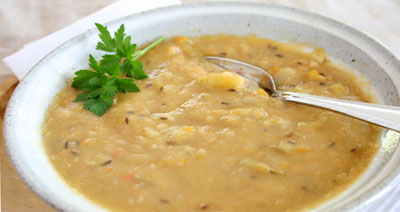 It can be a challenge cooking for two. When I made a big batch of Baked Garden Vegetable Stack the other day, I had a lot of tender vegetables left over. I turned them into creamy soup in 30 minutes.
It can be a challenge cooking for two. When I made a big batch of Baked Garden Vegetable Stack the other day, I had a lot of tender vegetables left over. I turned them into creamy soup in 30 minutes.
The thin slices of potatoes and tender ribbons of cabbage seemed to demand caraway, that distinctly flavored seed typically found in rye bread. I used to love ladling my mom’s sauerkraut dotted with caraway seeds over creamy chunks of boiled potatoes.
I started the soup by sauteing chopped onions and caraway seeds in hot oil. I tried a bit of the Butter Olive Oil I bought at Oh! Olive, a cute little shop in the Lincoln Park neighborhood of Chicago. The oil is organic with natural butter flavor, but is dairy-free and contains no animal products. I’ve discovered it’s perfect for popping corn, or drizzling over a bowl of hot popped corn. Anyway, when the onions began to turn golden brown, I dumped in all my leftover vegetables (I had quite a bit — only two of us ate a meal from that big pan of veggies), poured in a few cups of vegetable broth and let it all simmer together for about 20 minutes.

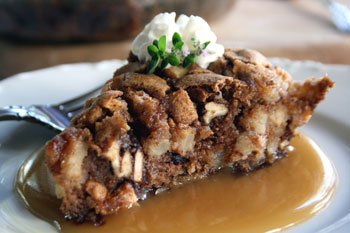 One of my favorite things about Fall is apples…and trips to the apple orchard. This year, without a trip to one of my favorite apple orchards in the Twin Cities area marked on the calendar, I was beginning to think it would be the first time in many, many years that I didn’t get to an apple orchard. The sign along Highway 10 that made me turn my car down a winding country road in search of my favorite fall fruit, turned into a wild goose chase. But then, an angel appeared and offered me all the apples I could possibly want or need.
One of my favorite things about Fall is apples…and trips to the apple orchard. This year, without a trip to one of my favorite apple orchards in the Twin Cities area marked on the calendar, I was beginning to think it would be the first time in many, many years that I didn’t get to an apple orchard. The sign along Highway 10 that made me turn my car down a winding country road in search of my favorite fall fruit, turned into a wild goose chase. But then, an angel appeared and offered me all the apples I could possibly want or need.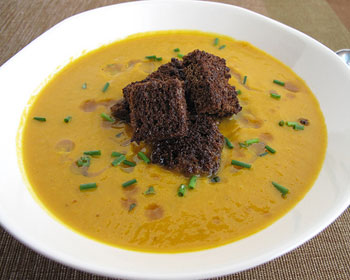 On cold days nothing gives me more comfort than hot soup. The flavor combination that I find most comforting in soups is sweet and savory. It's an ideal pairing in many foods that have come to represent autumn. Certain vegetables like sweet potatoes and squashes are all made more flavorful with a touch of sweet, be it from sugar or other sweeteners such as honey or molasses.
On cold days nothing gives me more comfort than hot soup. The flavor combination that I find most comforting in soups is sweet and savory. It's an ideal pairing in many foods that have come to represent autumn. Certain vegetables like sweet potatoes and squashes are all made more flavorful with a touch of sweet, be it from sugar or other sweeteners such as honey or molasses.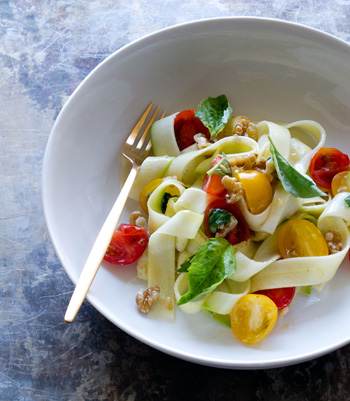 This is the first time in my life that I won’t be kicking and screaming for summer to stay just a bit longer. Not that I want it to go, mind you, I’m just happy to see the seasons do their thang, the earth to change notches such a tiny bit. The days are already significantly shorter, but when you’re from Southern California you’re generally immune to massive temperature changes anyway.
This is the first time in my life that I won’t be kicking and screaming for summer to stay just a bit longer. Not that I want it to go, mind you, I’m just happy to see the seasons do their thang, the earth to change notches such a tiny bit. The days are already significantly shorter, but when you’re from Southern California you’re generally immune to massive temperature changes anyway.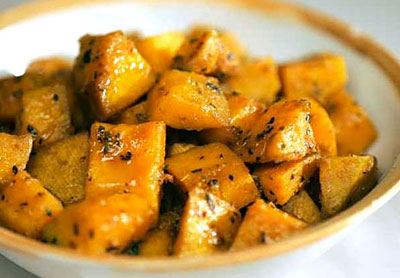 Never mind the name, these sweet, nutty squash are harvested in the fall. They are called "winter" because their hard shells allow them to be stored for extended periods, and in the days before refrigeration, that was a quality more worth honoring than mere harvest seasonality. The earliest winter squash are just beginning to trickle into the market -- kabocha, butternut and acorn, mostly.
Never mind the name, these sweet, nutty squash are harvested in the fall. They are called "winter" because their hard shells allow them to be stored for extended periods, and in the days before refrigeration, that was a quality more worth honoring than mere harvest seasonality. The earliest winter squash are just beginning to trickle into the market -- kabocha, butternut and acorn, mostly.
